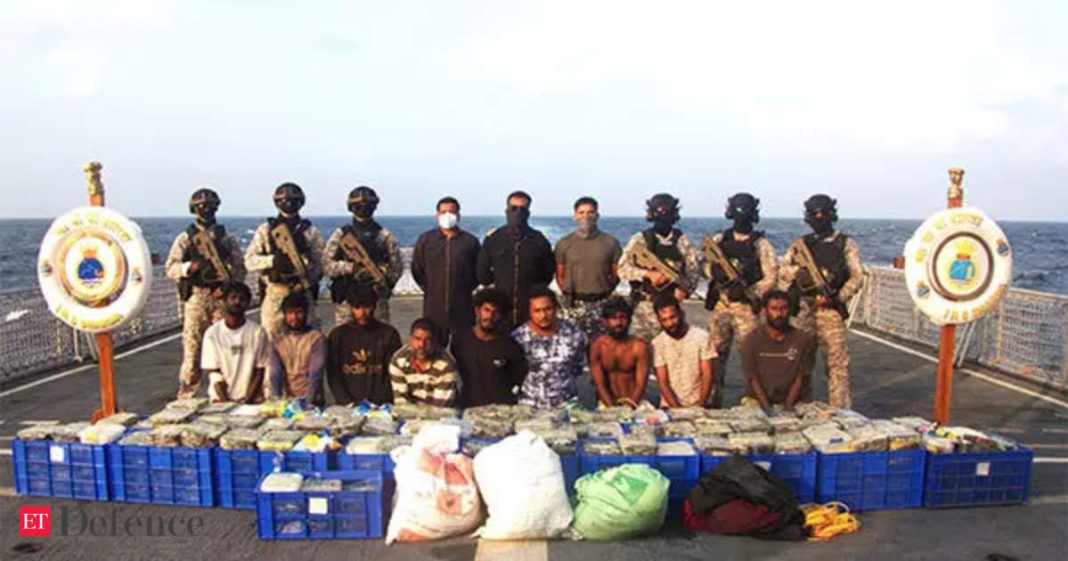In a significant maritime operation, the Indian Navy successfully intercepted two Sri Lankan-flagged fishing boats suspected of engaging in narcotics smuggling in the Arabian Sea. This well-coordinated effort took place over the course of two days, from November 24 to 25, resulting in the seizure of approximately 500 kg of crystal meth.
The operation highlights the strengthened maritime collaboration between India and Sri Lanka, particularly in addressing regional security issues. Following intelligence inputs from the Sri Lankan Navy, along with aerial surveillance conducted by the Indian Naval Long Range Maritime Patrol Aircraft and Remotely Piloted Aircraft (RPA), the Indian Navy was able to locate and identify the vessels linked to the criminal activity. The surveillance efforts were further informed by data from the Information Fusion Centre in Gurugram, India.
During the operation, an Indian Navy warship, supported by aerial assets, successfully boarded the two fishing boats on the designated dates. To enhance operational effectiveness, an additional naval vessel was dispatched to ensure comprehensive surveillance and engage in joint operations. Following the seizure of the narcotics, the boats and crew members were subsequently turned over to Sri Lankan authorities for further legal action.
This operation serves as a testament to the strong partnership established between the naval forces of India and Sri Lanka and emphasizes their collective determination to tackle maritime challenges and maintain safety and security in the Indian Ocean Region.
In a related development, India’s commitment to maritime security was further underscored by the successful conclusion of the fourth edition of the Pan-India Coastal Defence Exercise, Sea Vigil 2024, which wrapped up on November 21. The exercise comprised two phases, with the first phase taking place from November 13 to 19, while the second phase unfolded over a 36-hour period across all coastal states and union territories.
Sea Vigil 2024 demonstrated India’s robust approach to enhancing its maritime security framework, covering the country’s extensive 11,098 km coastline and its Exclusive Economic Zone spanning 2.4 million square kilometers. The exercise saw participation from over 21 agencies across six ministries, including the Indian Navy, Indian Army, Indian Air Force, Indian Coast Guard, as well as various state and local agencies.
During the second phase of the exercise, more than 550 surface assets were deployed alongside 60 air sorties, totaling around 200 hours of flight time, showcasing the comprehensive efforts made by India to bolster its coastal defenses and joint operational readiness against any maritime threats.
Discover more from SSBCrack
Subscribe to get the latest posts sent to your email.








